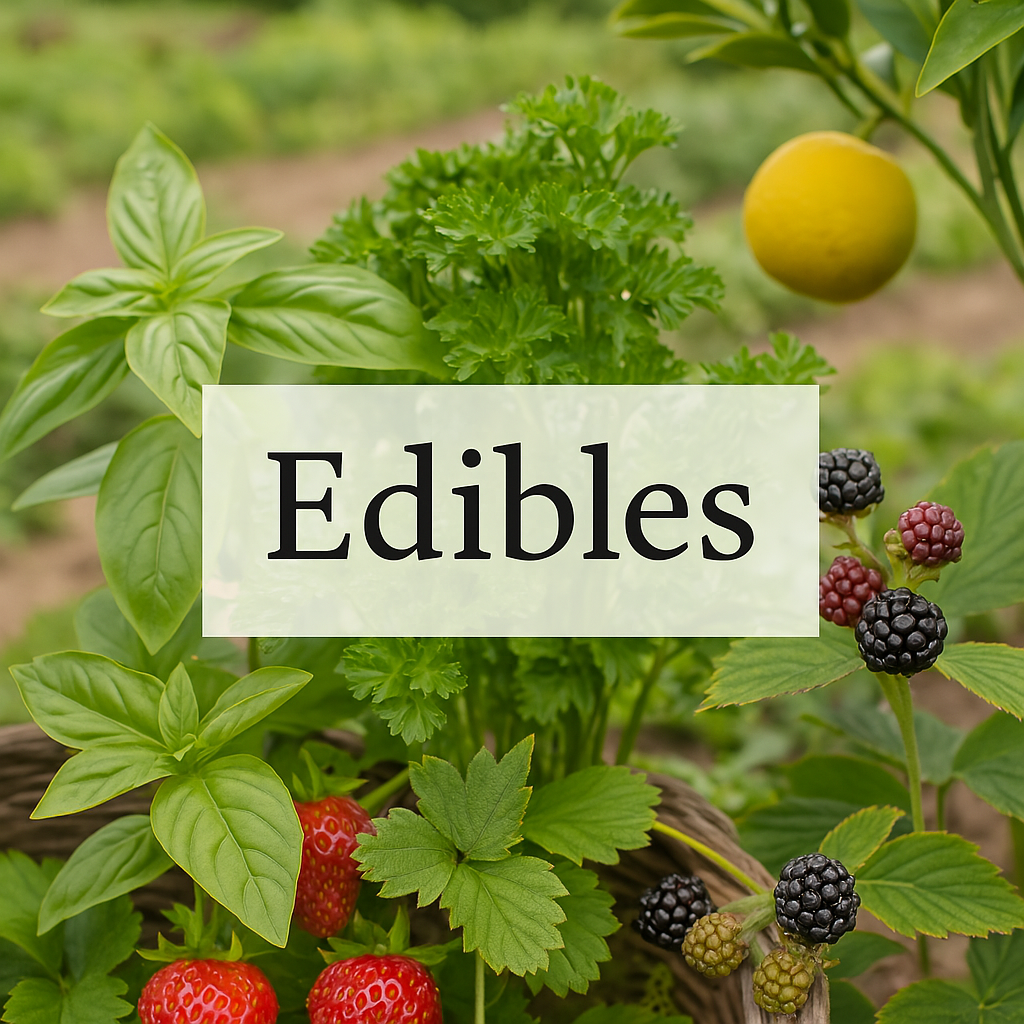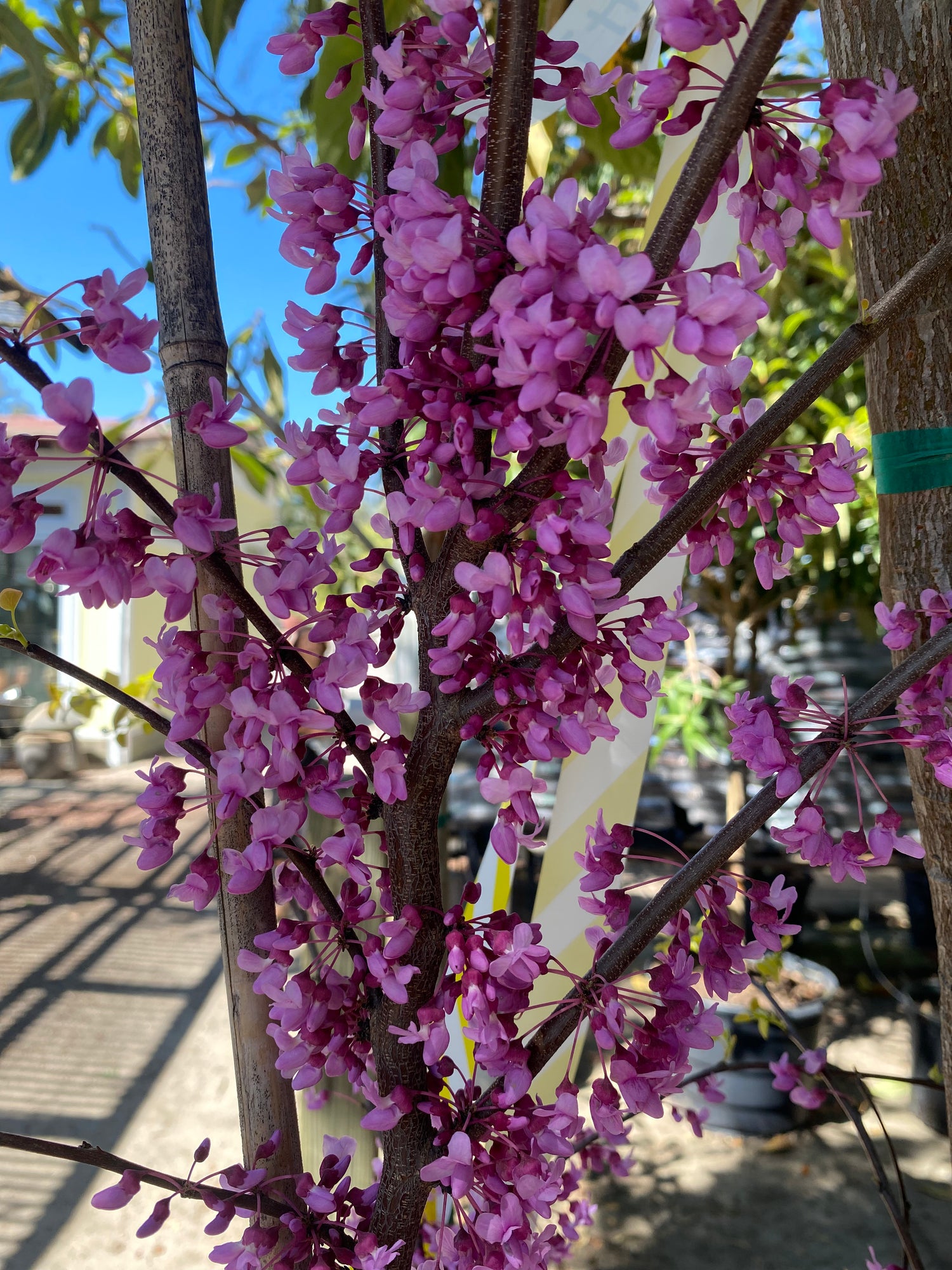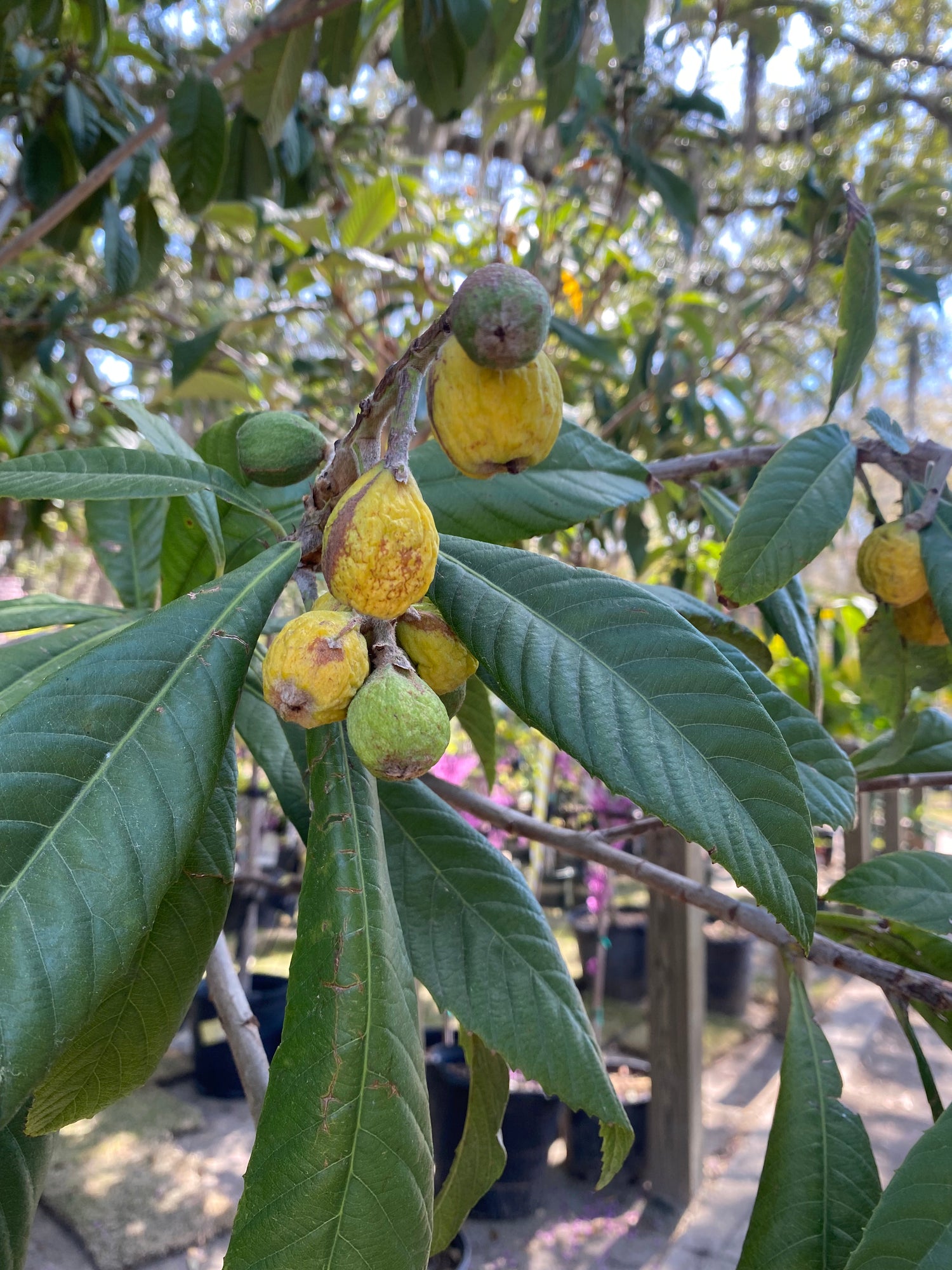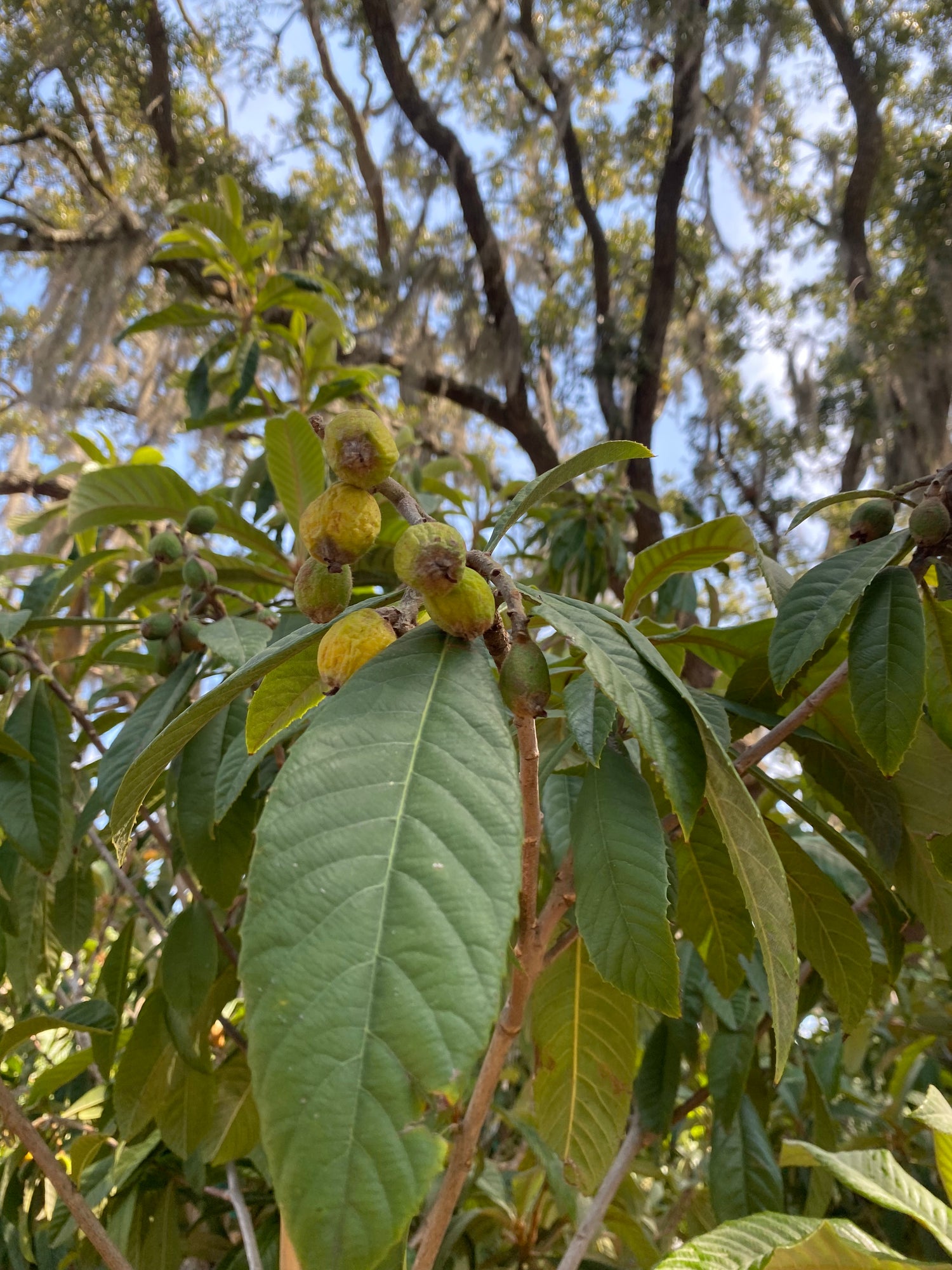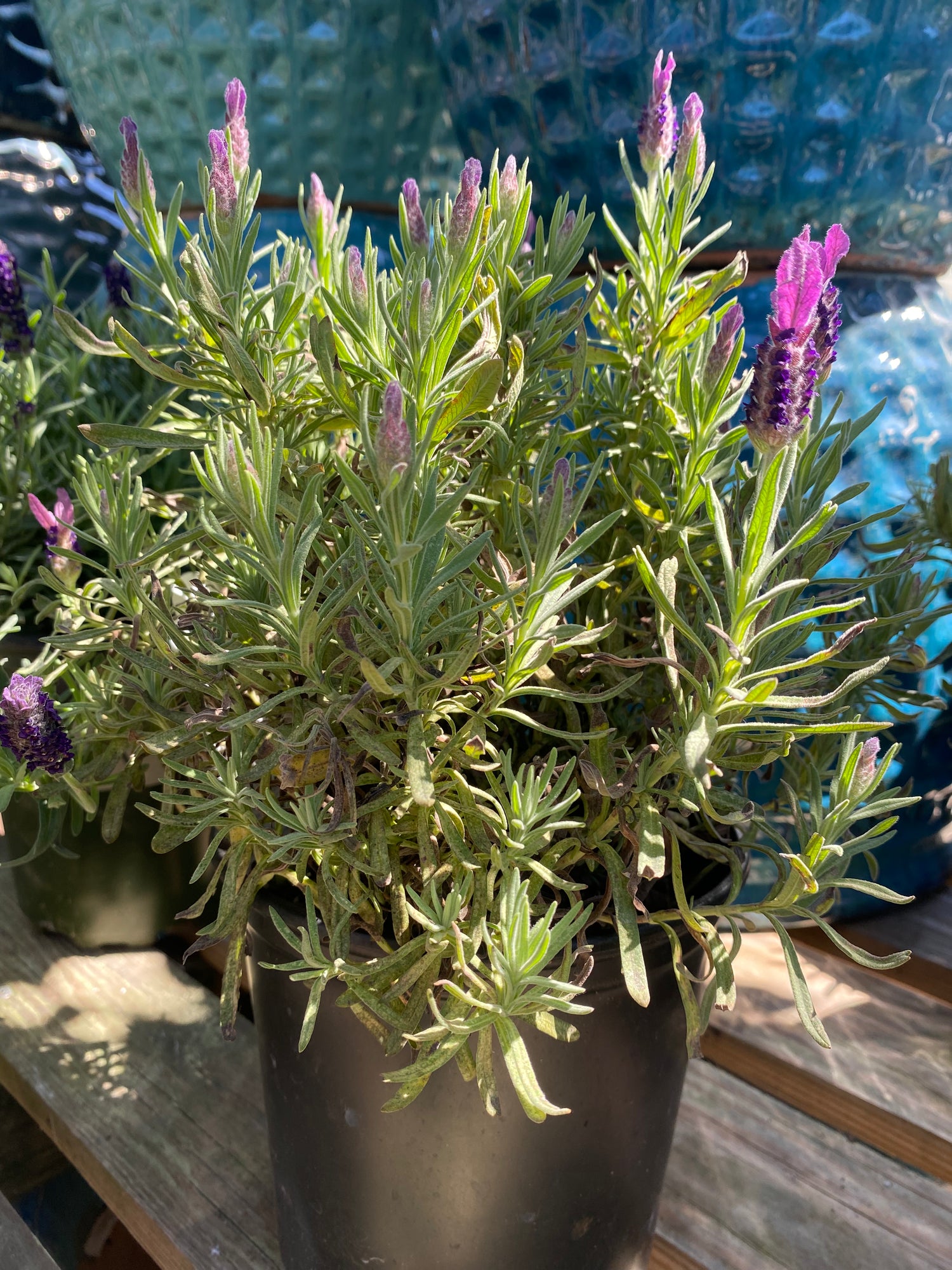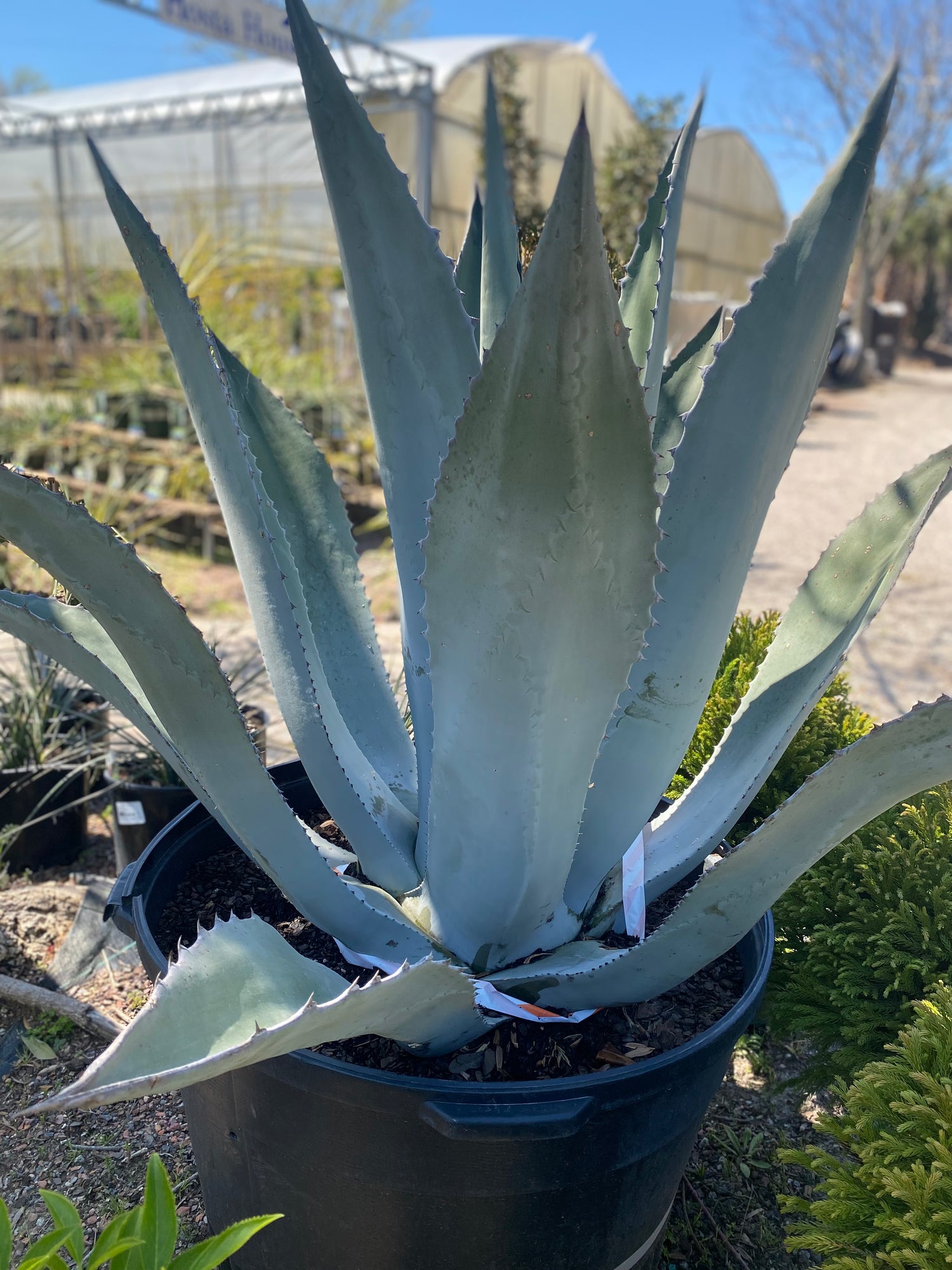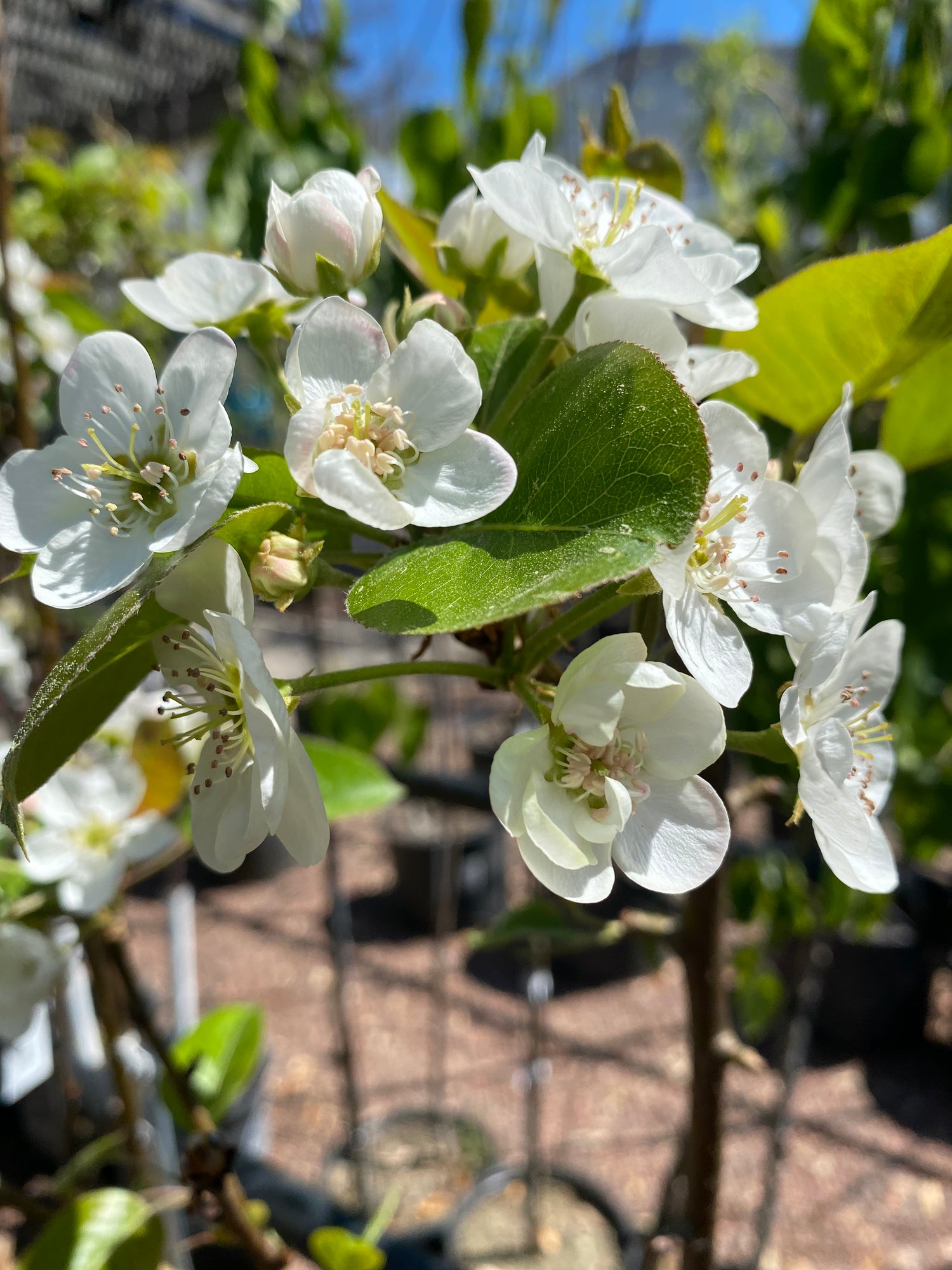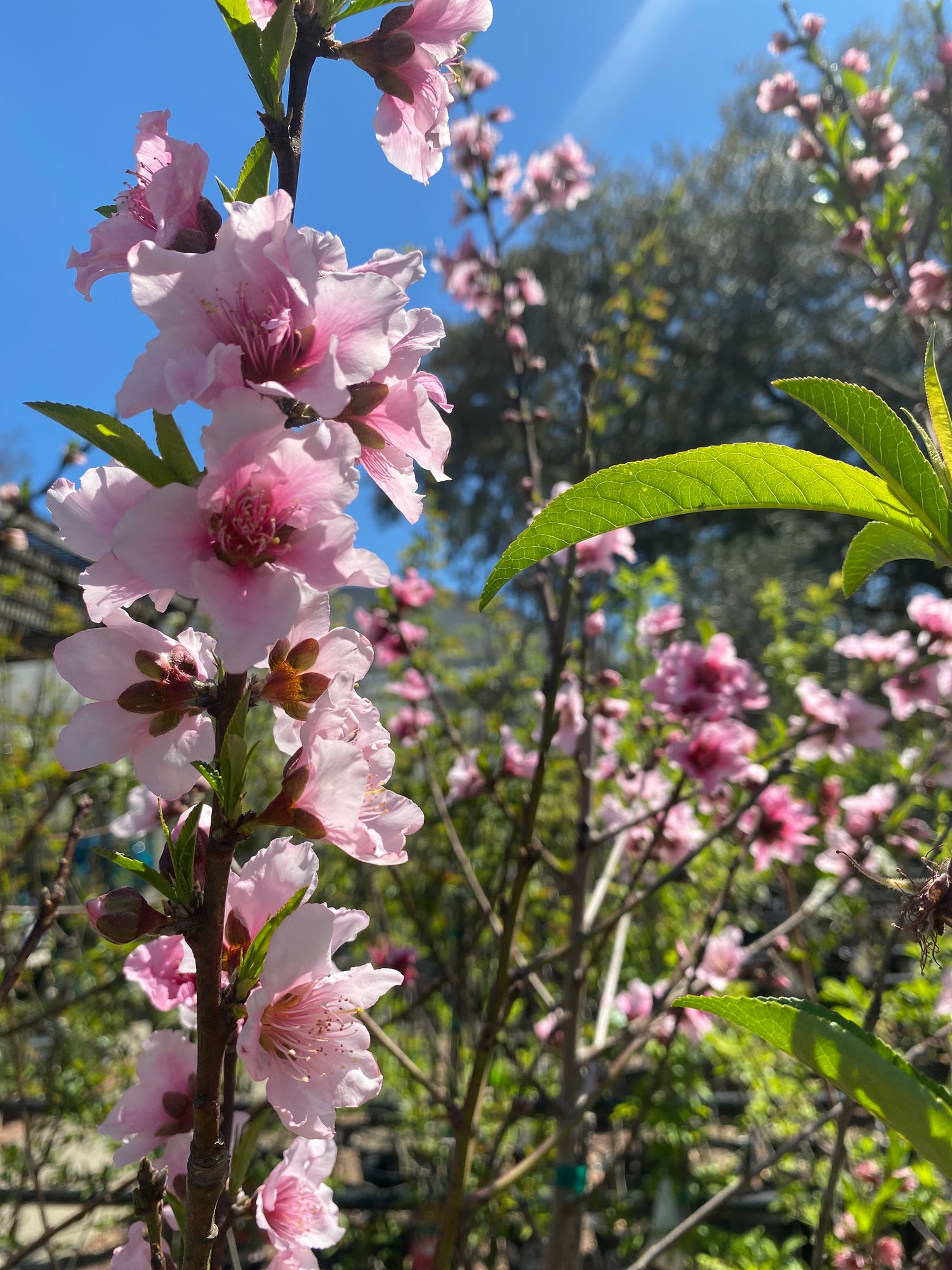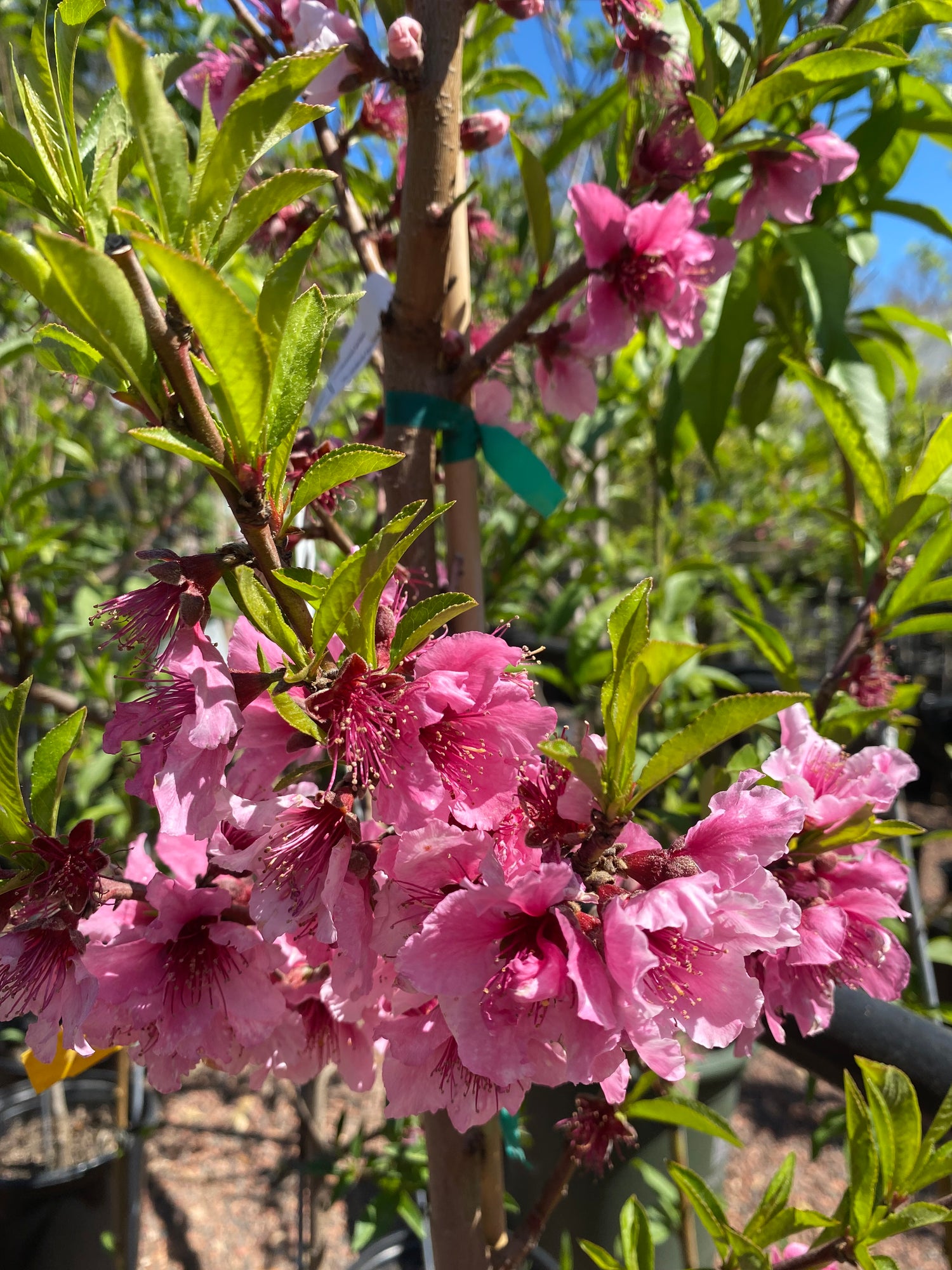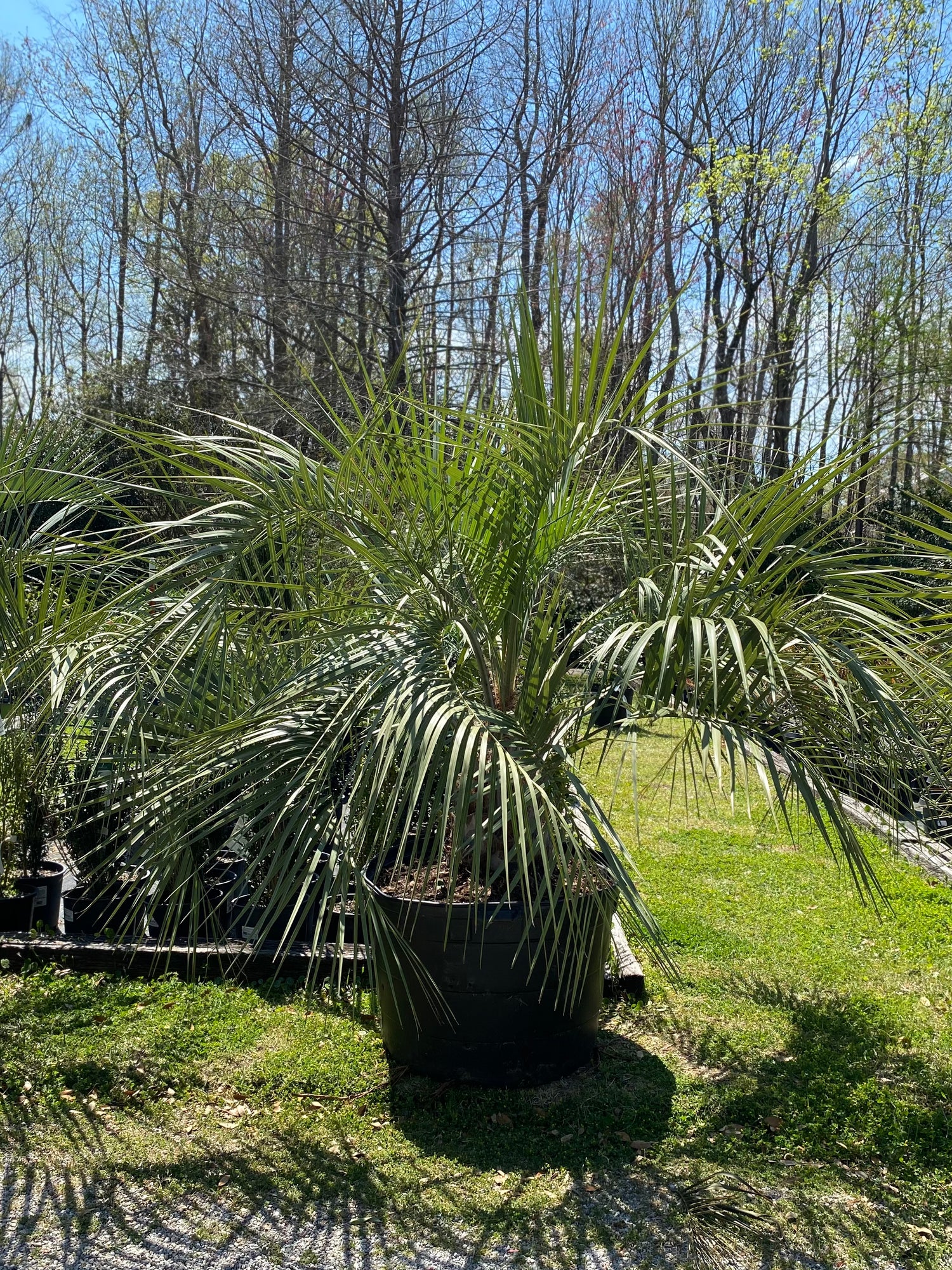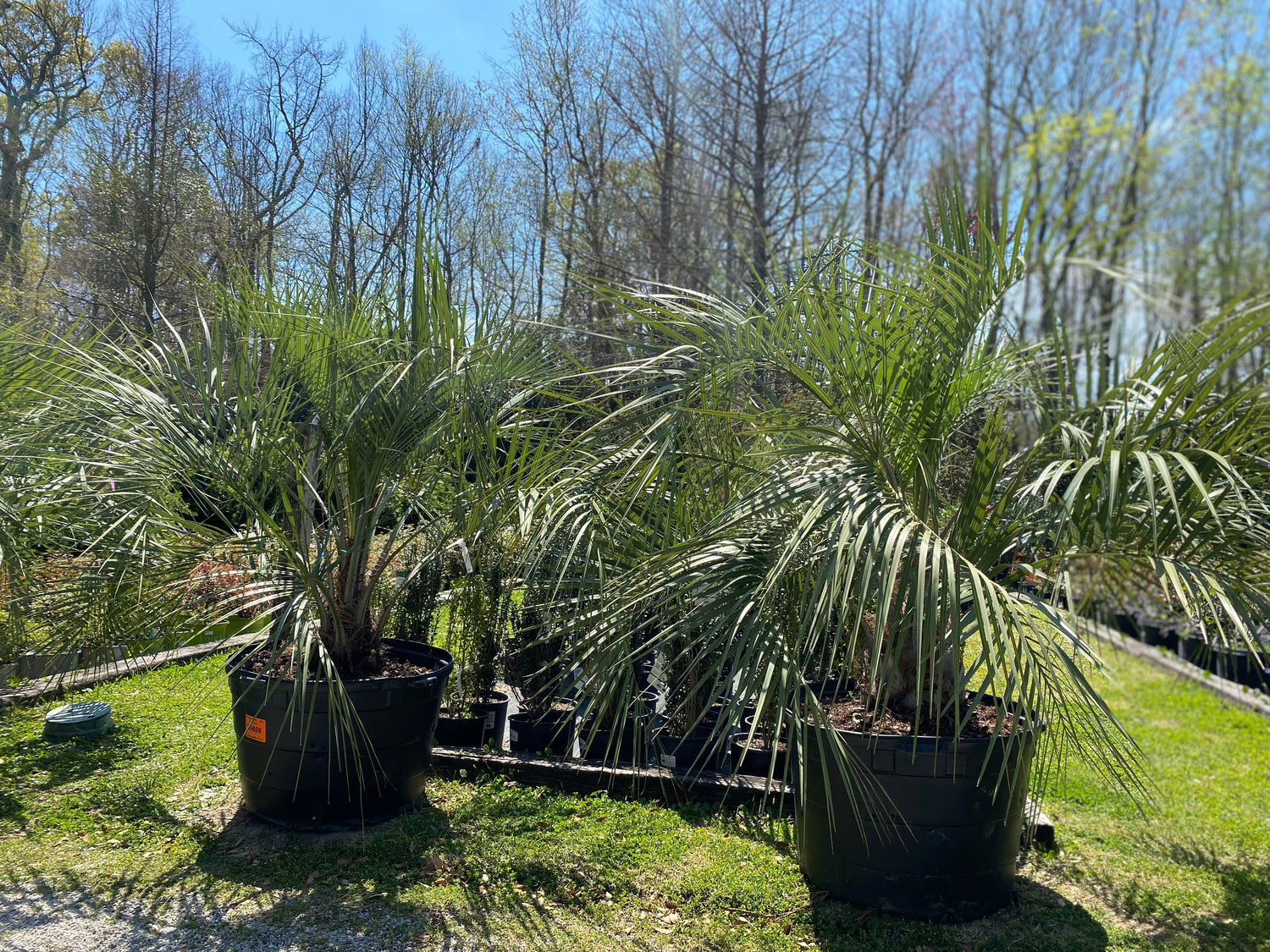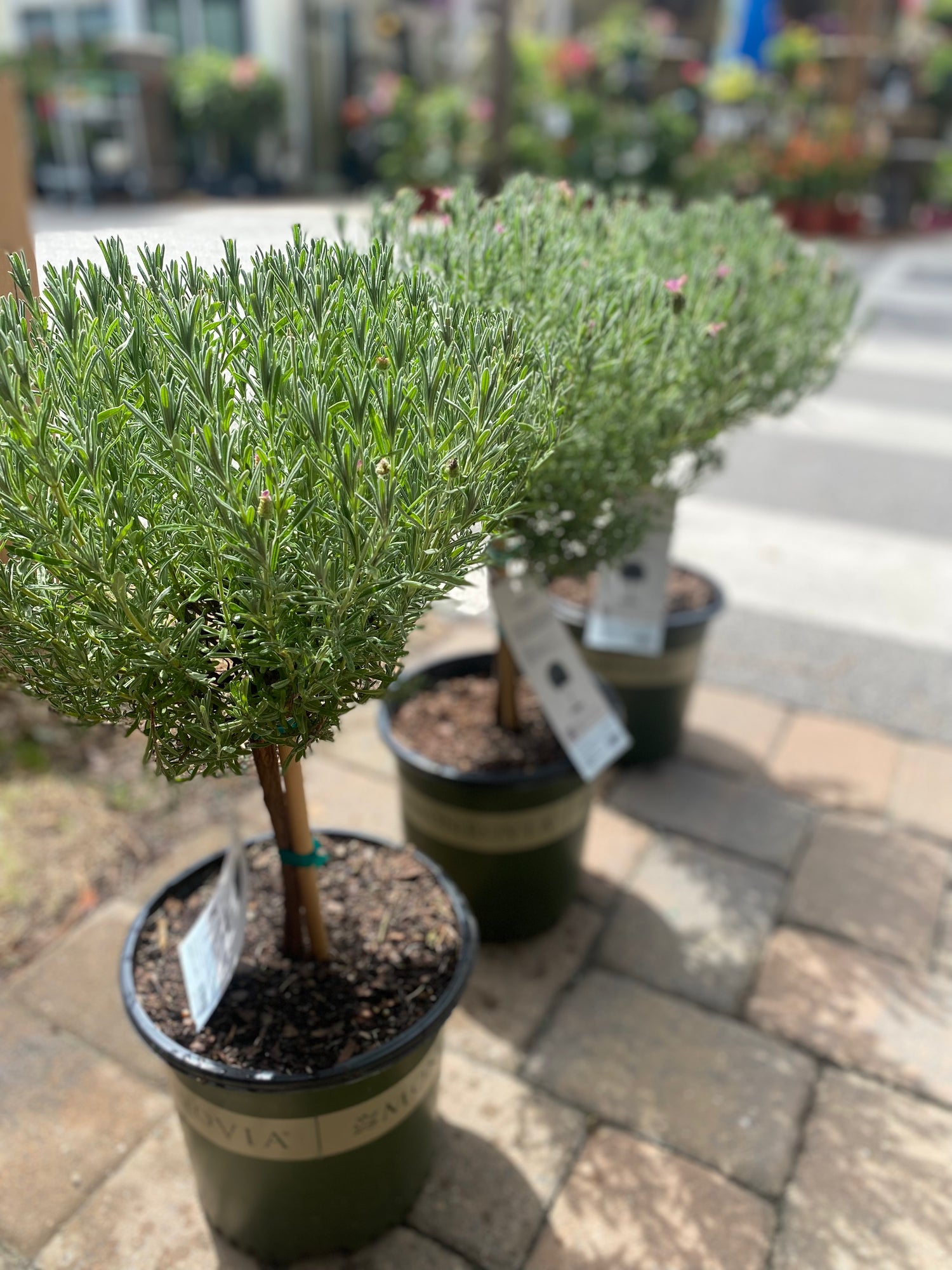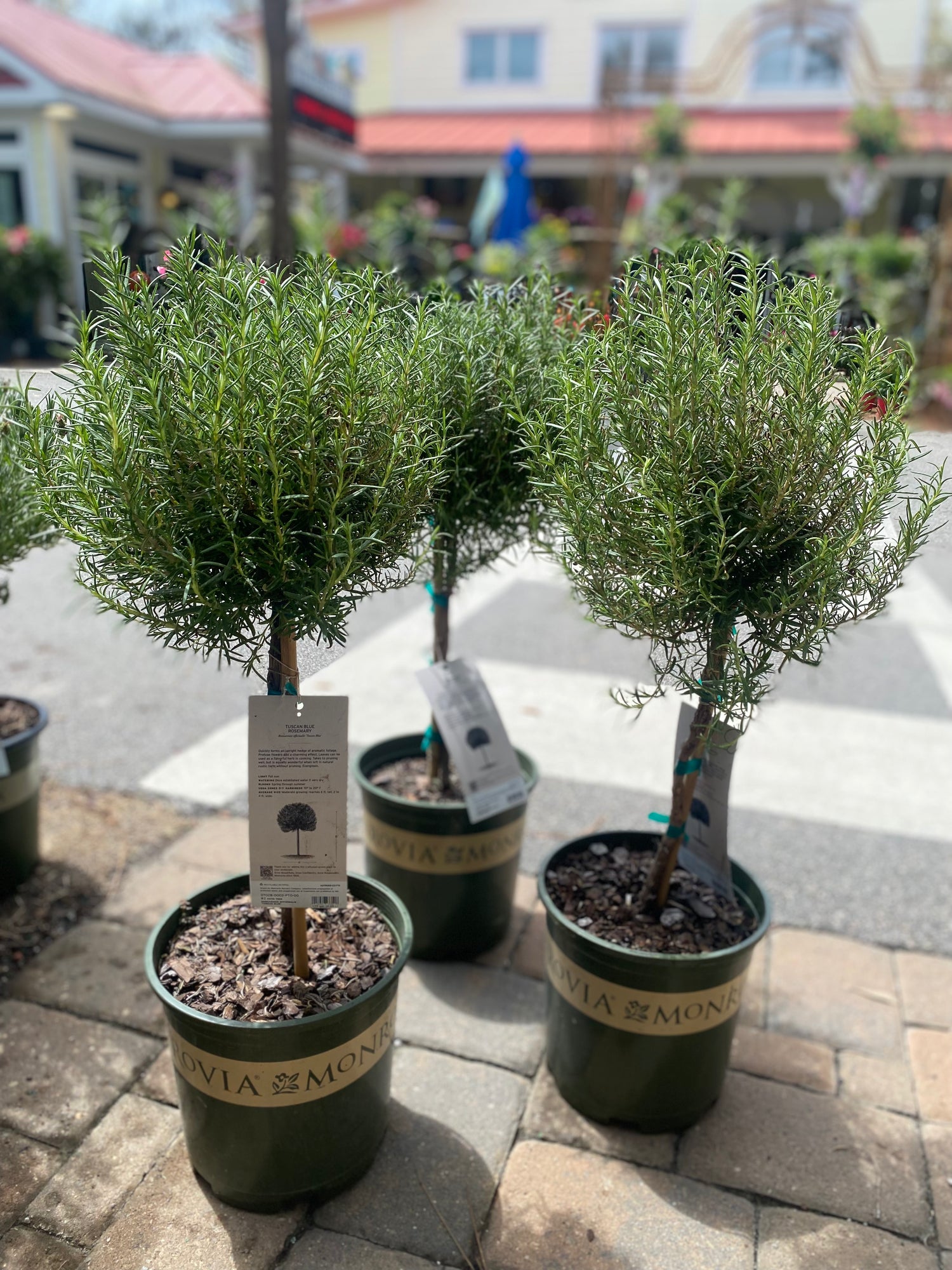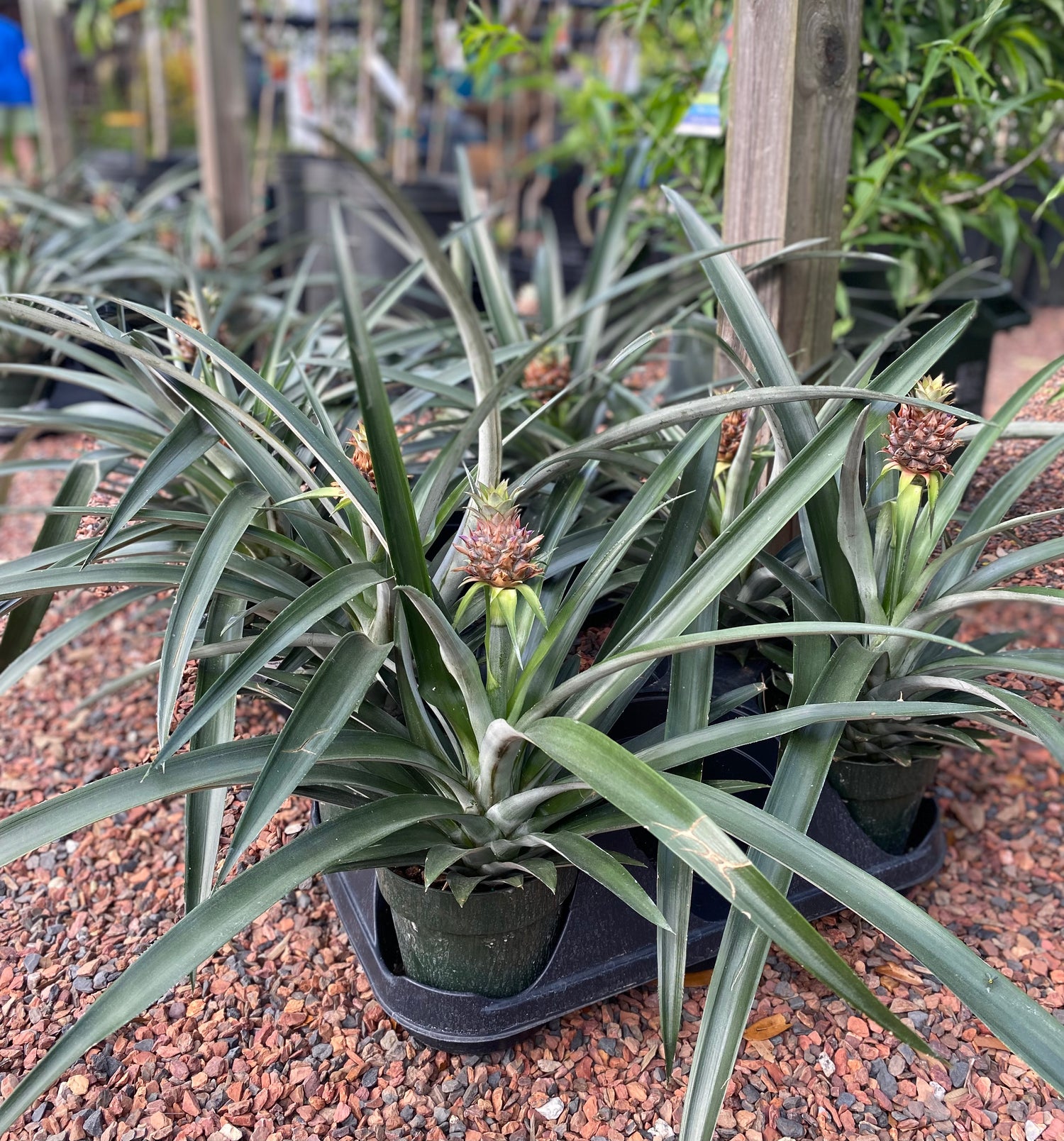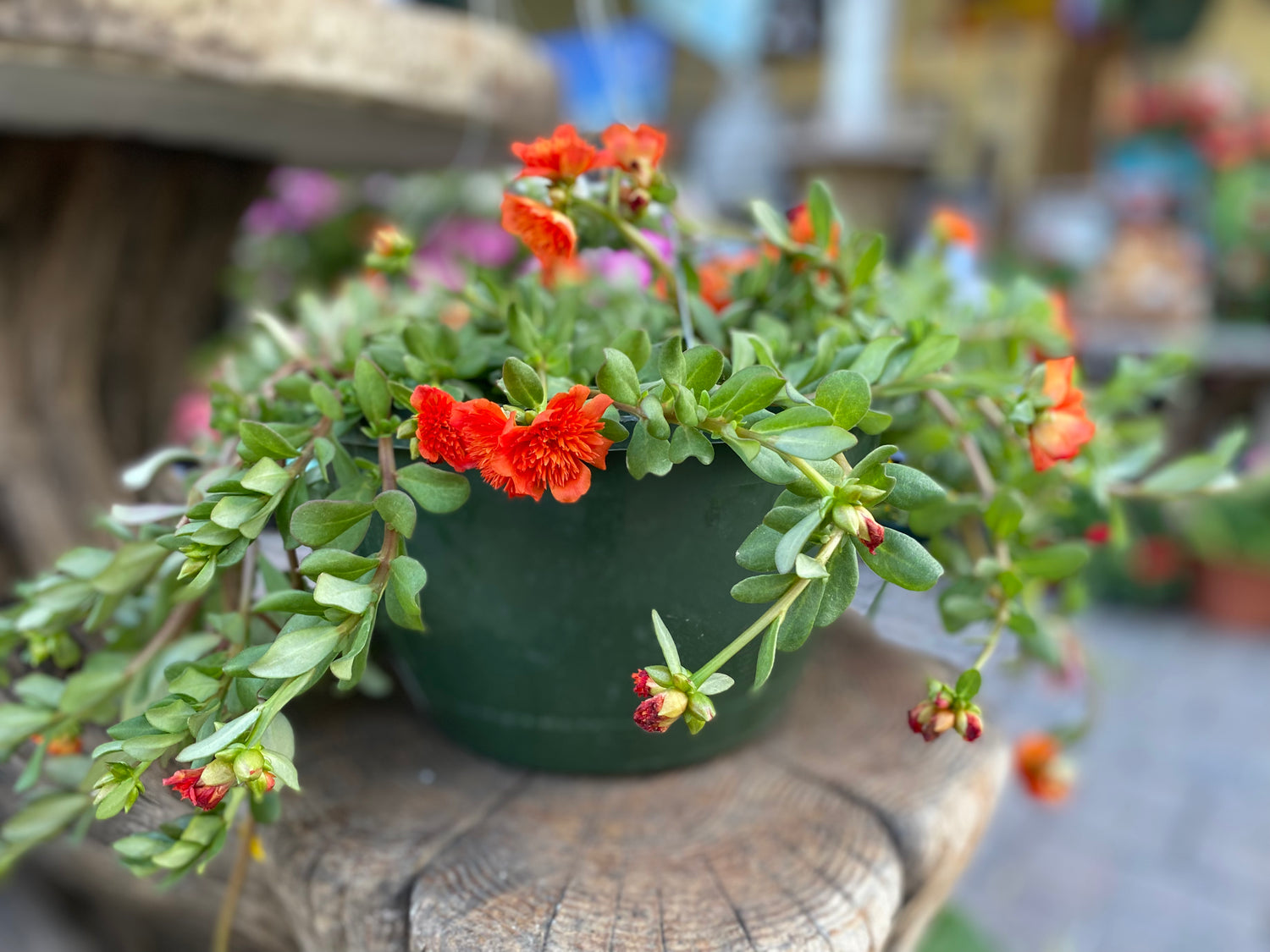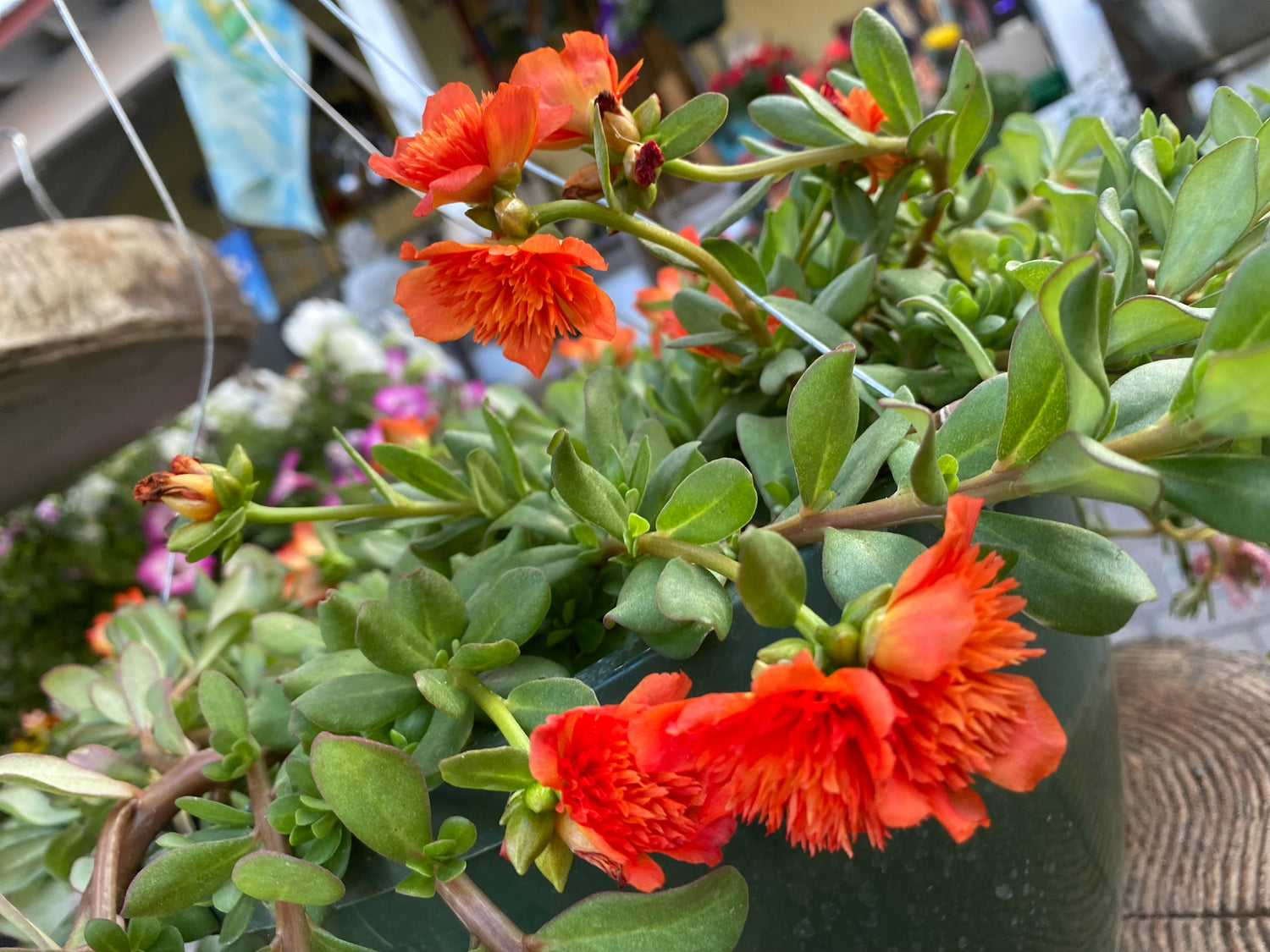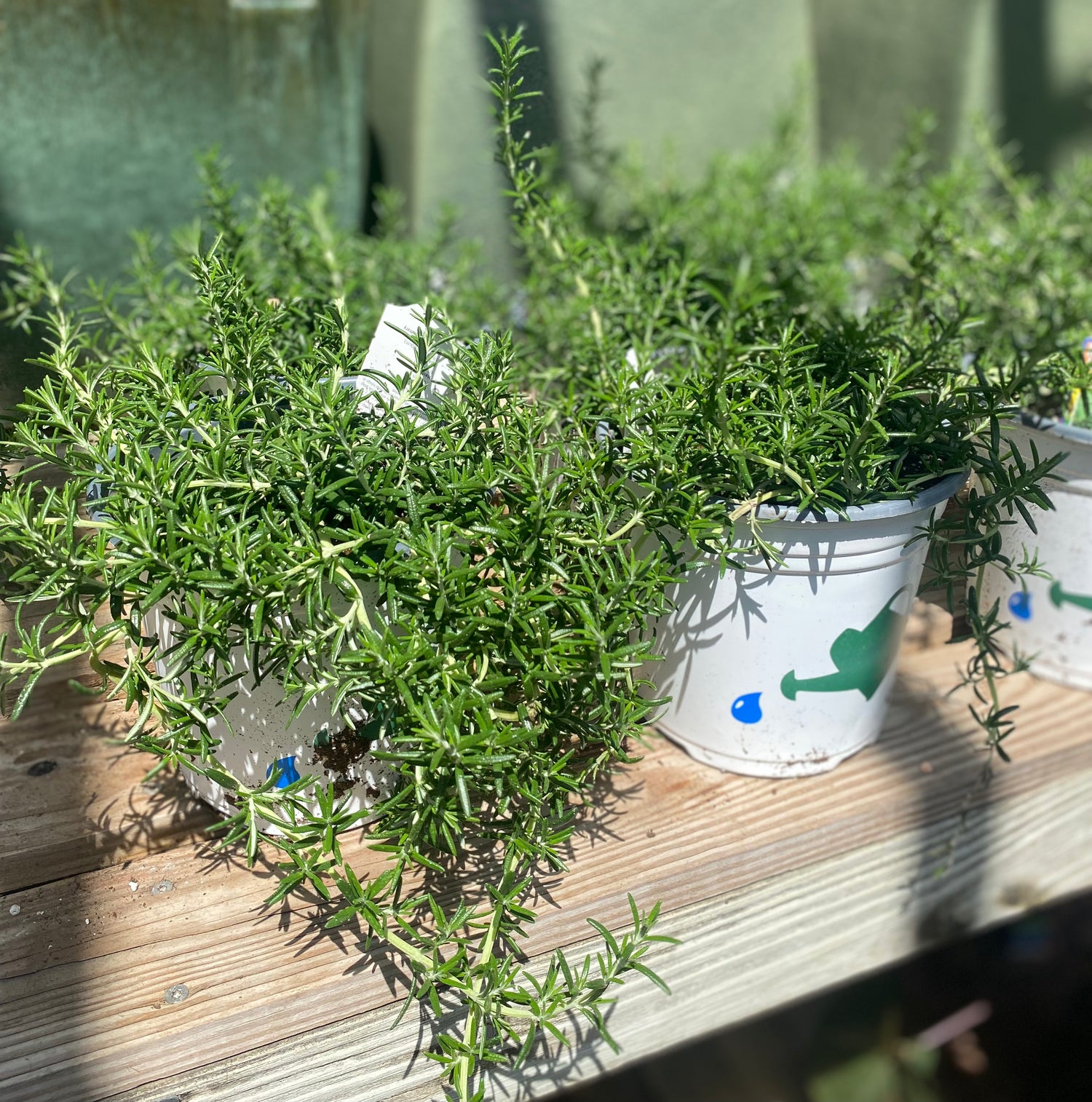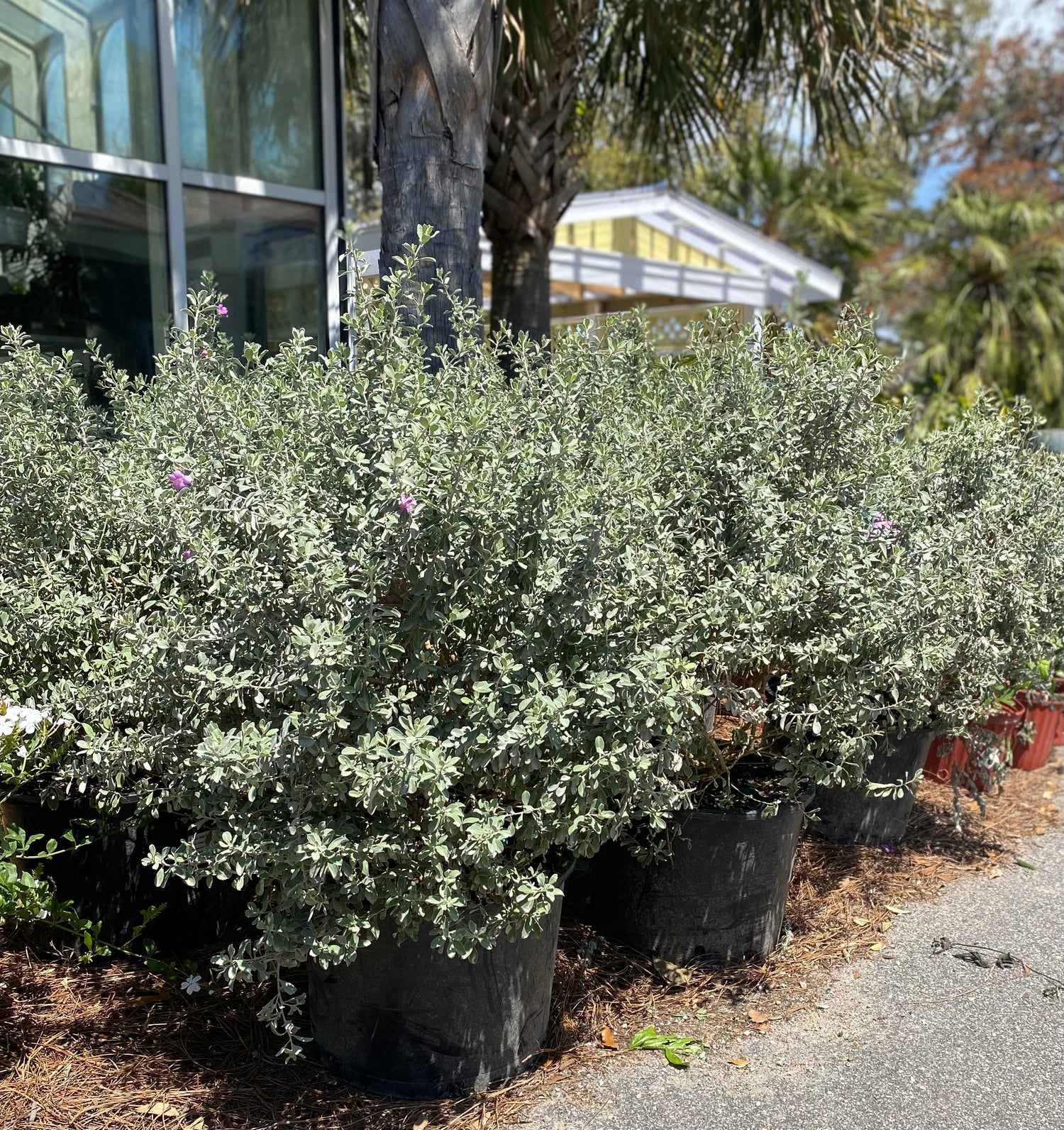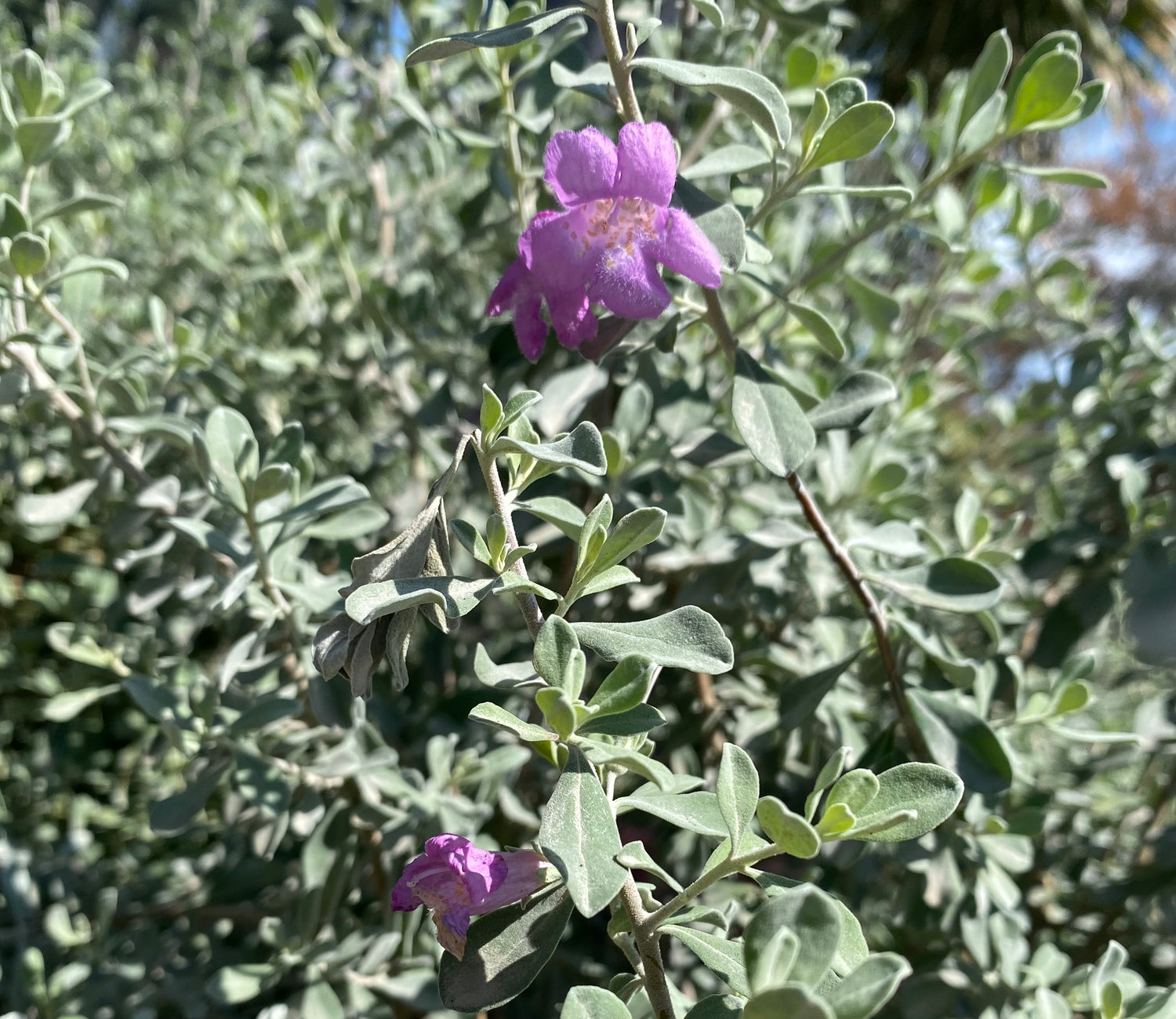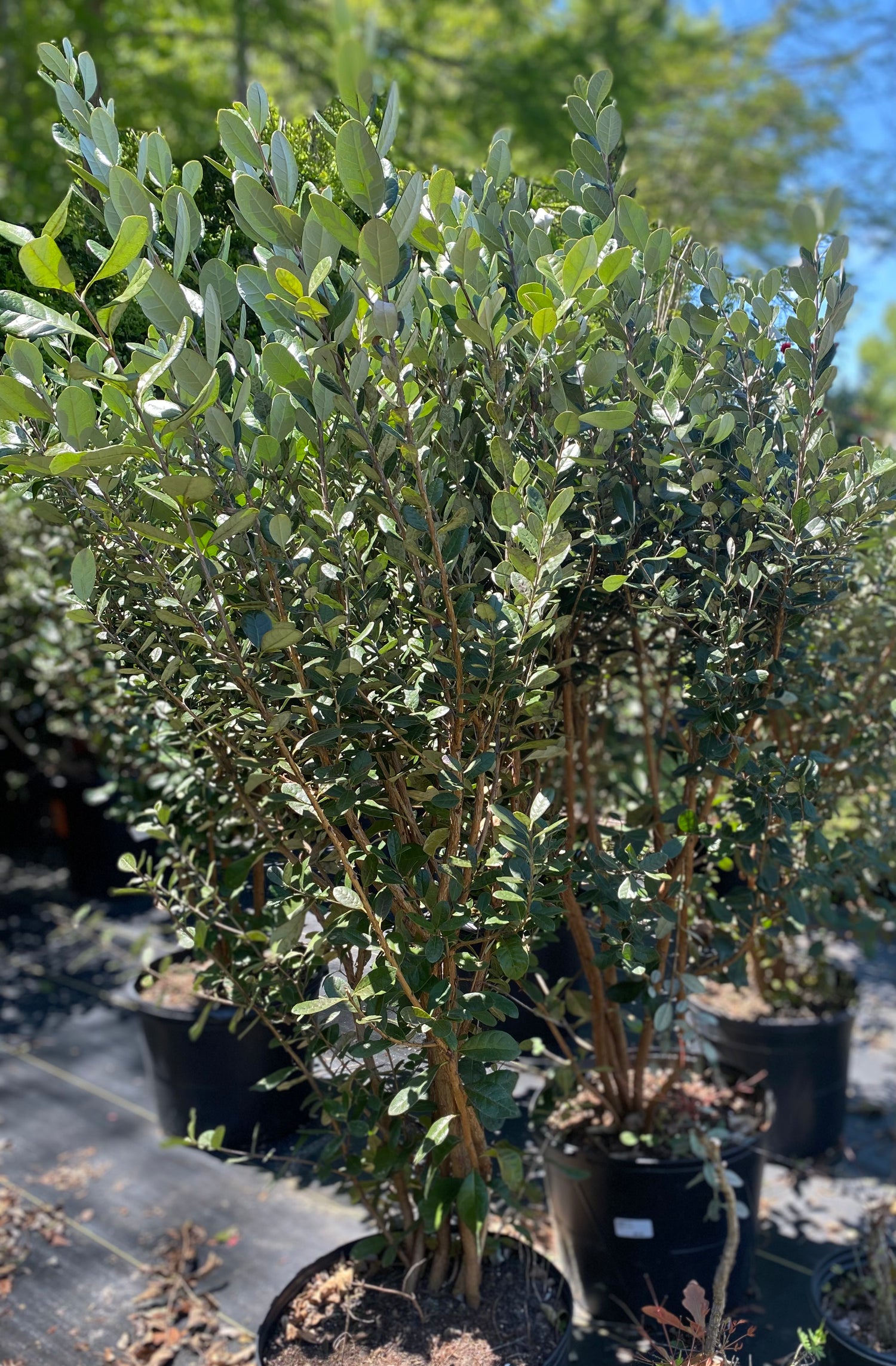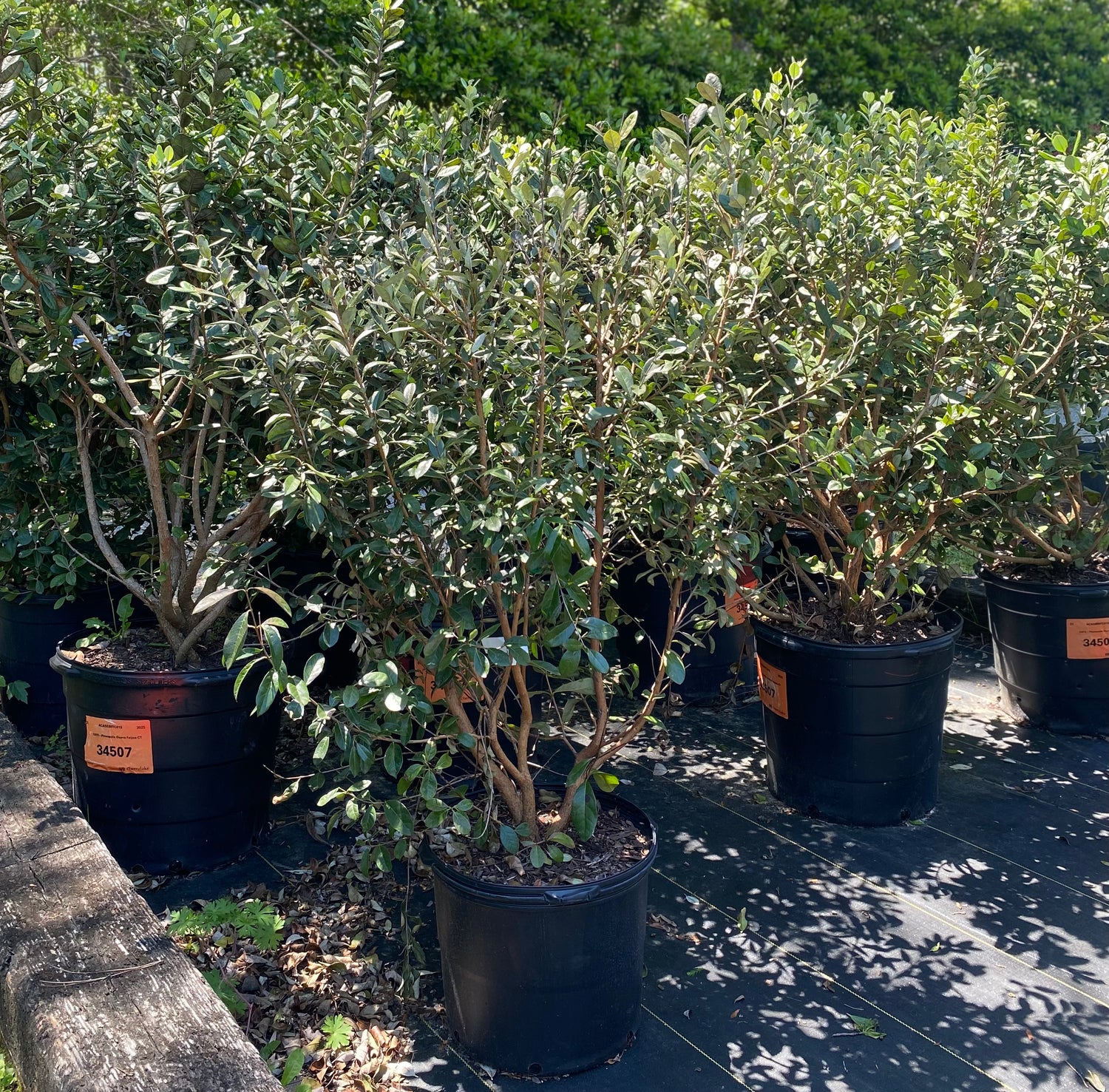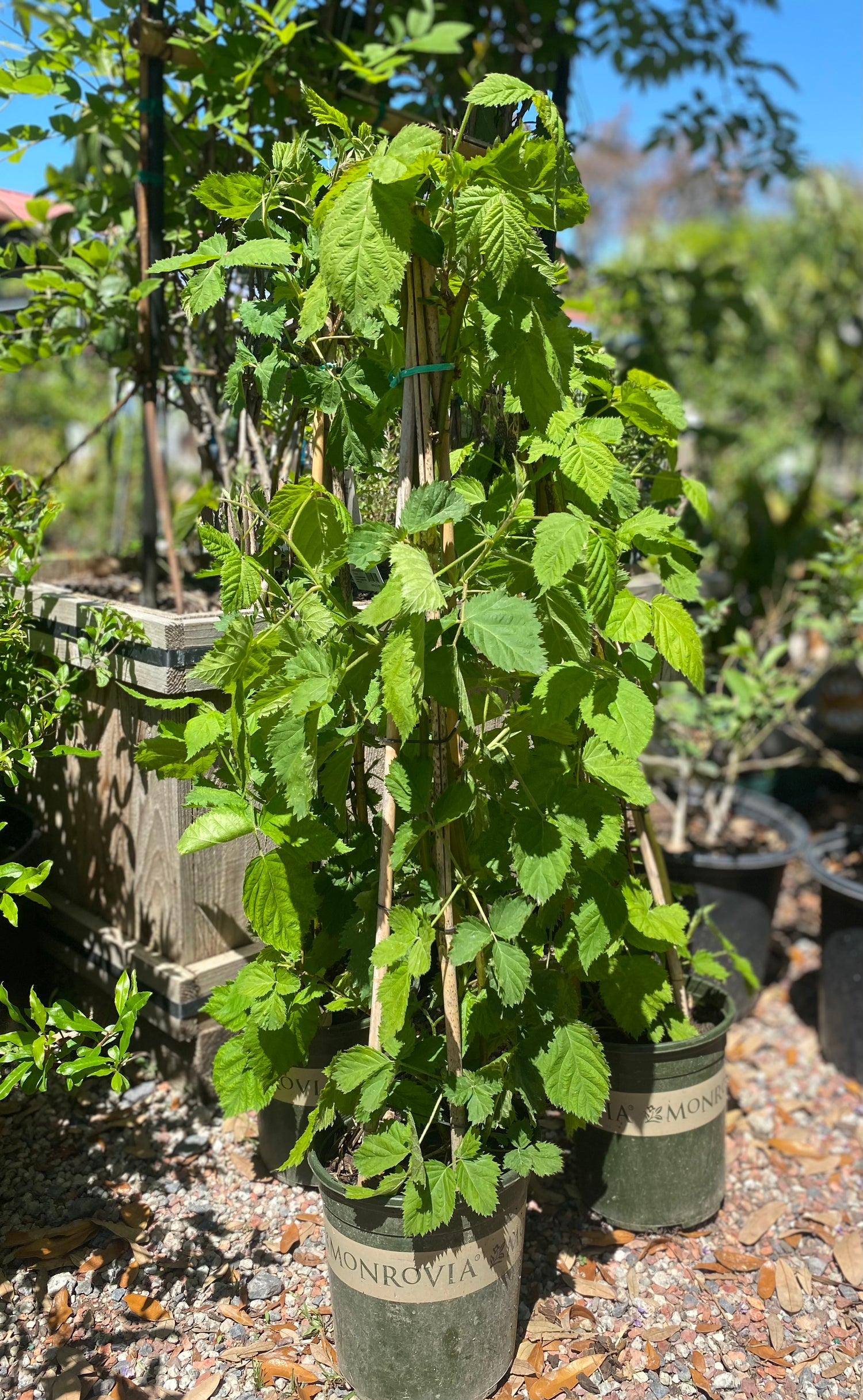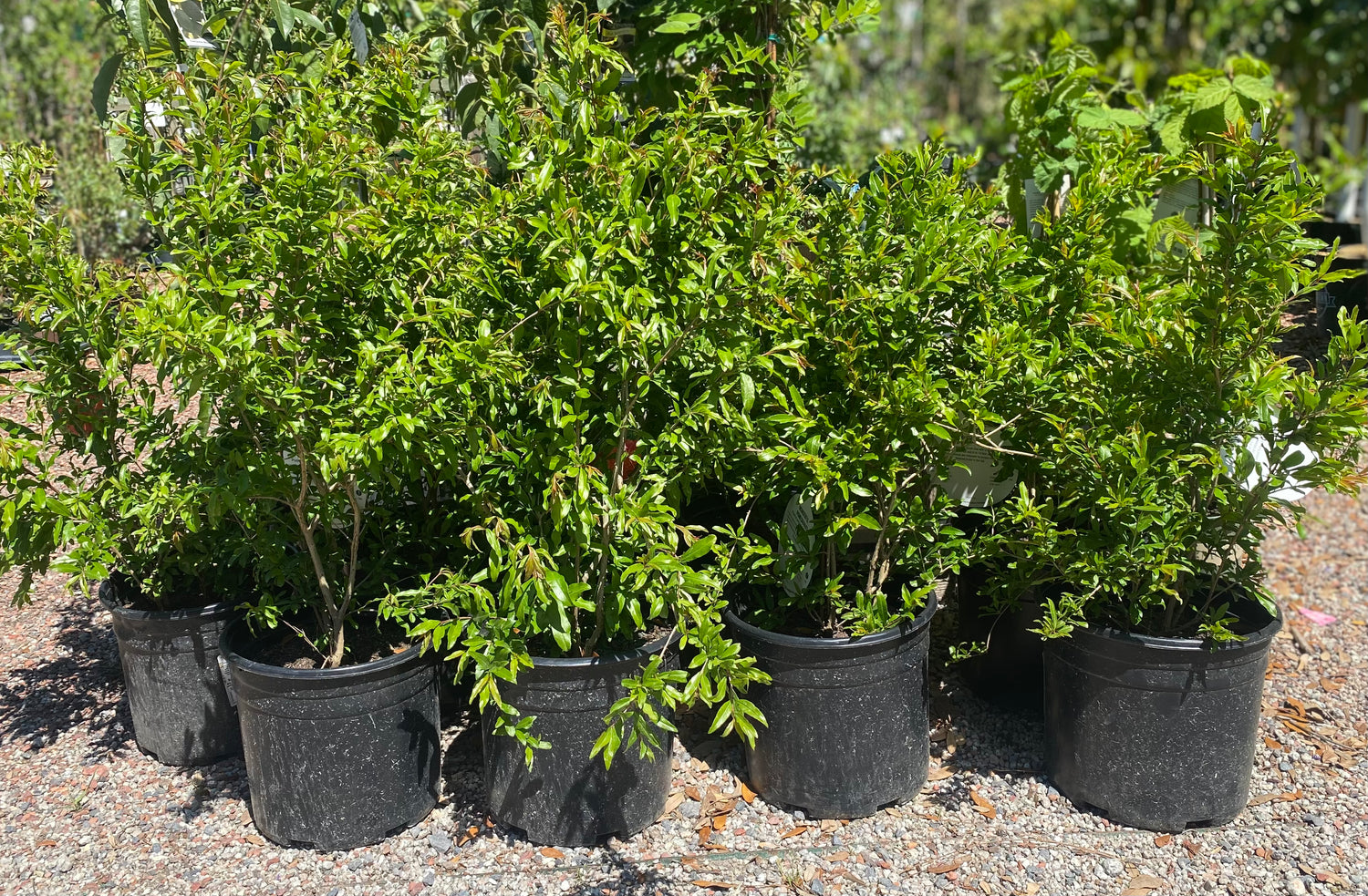Sort by:
The Rise 'N Shine also known as the Rising Sun Redbud is a breathtaking ornamental tree that lights up the landscape with early spring blooms and brilliant, ever-changing foliage. In early spring, its branches are covered in vibrant lavender-pink flowers before the leaves emerge, creating a striking display.
As the season continues, heart shaped leaves unfold in shades of gold, orange, and apricot, eventually maturing to soft green - all on deep burgundy stems. Compact and elegant, it's perfect for small yards, entryways, or as a colorful focal point in garden beds.
Light: Full sun to part shade
Height: 8-12 feet
Spread: 6-8 feet
Hardiness: USDA Zones 5-9
Bloom Time: Early spring
Foliage Color: Gold to green, multi-toned
Water: Moderate; prefers well-drained soil
Maintenance: Low
The Rise 'N Shine Redbud is fragrant. It produces soft pink-lavender blooms in early spring that have a light, sweet scent. It's not overpowering, but it's noticeable up close, especially when the tree is covered in blooms. Like other Eastern Redbuds the flowers are edible and often used as: salad toppers (for color & a mild tangy taste), garnishes on cakes. They are tart and have a hint of green, citrusy flavor.
Loquat Tree - Evergreen Fruit Tree with Tropical Flair
The Loquat Tree is a unique evergreen fruit tree prized for its tropical foliage and sweet, juicy fruit. Its large, leathery leaves provide year-round texture, while clusters of fragrant white blooms appear in late fall to early winter, followed by golden-orange fruit in spring.
Loquats are deliciously tangy and sweet, often eaten or used in jams, desserts, and preserves. The tree itself is low-maintenance, drought tolerant once established, and brings both beauty and productivity to edible landscapes.
Light: Full sun
Height: 10-20 feet
Spread: 8-15 feet
Hardiness: USDA Zones 8-10
Water: Moderate; prefers well-drained soil
Fruit: Small, golden tangy-sweet
Evergreen: Yes
Pollinator Friendly: Yes - fragrant blooms attract bees
Maintenance: Low
With its lush appearance and tasty harvest, the Loquat Tree is a perfect blend of ornamental charm and homegrown flavor.
Unlike many lavenders, Phenomenal French Lavender handles heat, humidity, and even cold winters with ease - making it one of the most reliable lavenders for gardens across a wide range of climates.
Long blooming and low maintenance, it produces slender spikes of deep purple flowers from summer into fall, attracting bees, butterflies, and hummingbirds. Its compact, mounded shape makes it perfect for borders, herb gardens, walkways, or containers.
Light: Full sun
Height: 24-32 inches
Spread: 24-30 inches
Hardiness: USDA Zones 5-9
Water: Low; drought-tolerant once established
Soil: Well-drained, slightly sandy or rocky
Fragrant: Yes - classic lavender scent
Pollinator Friendly: Yes
Maintenance: Low; prune lightly after bloom
Evergreen: Only in mild climates (zones 6-9)
These low maintenance succulents love the sun and thrive in dry, well-drained soil. Once established, they require very little water and provide year-round structure. Agaves pair beautifully with rocks, gravel, and other drought tolerant plants, making them a standout choice for modern garden designs.
Light: Full sun
Height: Varies by species (commonly 2-6 feet)
Spread: 3-8 feet
Hardiness: USDA Zones 8-11 (depending on variety)
Water: Low; prefers dry conditions
Soil: Well-draining, sandy or rocky
Maintenance: Minimal
The Keiffer Pear Tree is a hardy, easy-to-grow variety known for its crisp texture, sweet-tart flavor, and excellent versatility. In spring, it bursts with clusters of delicate white flowers, making it just as ornamental as it is productive.
This tree offers consistent harvests of firm, yellow pears with a red blush. Keiffer pears are excellent for fresh eating, canning, baking, and preserving. It's also highly disease-resistant and well-suited to warm, humid climates-especially in the southeast.
Light: Full sun
Height: 15-25 feet
Spread: 12-20 feet
Hardiness: USDA Zones 4-9
Bloom Time: Early to mid-spring (white blossoms)
Harvest Time: Late September to October
Pollination: Partially self-pollinating; better yields with another pear nearby
Fruit: Medium to large, yellow with firm, crisp flesh
Soil: Well-drained soil; tolerates clay and heavier soils
Maintenance: Low; prune in late winter to encourage airflow and fruiting
Keiffer is a longtime Southern favorite - rugged, reliable, and full of old-fashioned pear flavor. A great pick for backyard growers and beginner gardeners alike.
Brighten up your garden with the Flordaking Peach Tree - a fast-growing, early-ripening variety known for its beautiful pink spring blossoms and sweet, juicy fruit. This tree is a Southern favorite, bred to thrive in warmer climates and perfect for home orchards in the southeast.
Flordaking produces medium to large peaches with firm, yellow flesh and a classic peach flavor. Ideal for fresh eating, baking, or preserving, these freestone fruits are easy to enjoy. Its stunning floral display also makes it a standout in the landscape each spring.
Light: Full sun
Height: 12-15 feet
Spread: 12-15 feet
Hardiness: USDA Zones 7-9
Bloom Time: Early spring
Harvest Time: Late May to early June
Fruit: Yellow-fleshed, freestone, medium to large size
Pollination: Self-pollinating
Soil: Well-drained, fertile soil
Maintenance: Moderate; prune annually to maintain shape and productivity
Flordaking is perfect for southern gardeners who want reliable harvests, early fruit, and vibrant spring color all in one tree.
Introducing the Flavortop Nectarine Tree, a standout variety celebrated for its large, juicy nectarines and ornamental appeal. In early spring, the tree bursts into life with abundant, showy pink blossoms, adding a touch of elegance to any landscape. As the season progresses, these blossoms give way to sizable, nectarines, boasting a vibrant red-orange skin over golden yellow flesh. Renowned for their sweet and tangy flavor, these nectarines are perfect for fresh eating, baking, or canning.
Light: Thrives in full sun
Mature Size: Reaches 12-15 feet in height and spread
Hardiness: Suitable for USDA zones 5-9
Soil: Prefers well-drained, loamy soil with a PH between 6.0 and 7.0
Watering: Requires regular watering to maintain medium moisture levels
Bloom Time: Mid-spring with pink blossoms
Harvest Time: Ripens in August
Pollination: Self-pollinating; however, planting another nectarine or peach tree nearby can enhance fruit production
Maintenance: Prune in late winter to maintain an open center shape and promote healthy growth
Add the Flavortop Nectarine Tree to your orchard or garden for a harmonious blend of aesthetic beauty and delectable fruit. Its vigorous growth and bountiful harvests will provide enjoyment for years to come.
The Pindo Palm is a slow growing, cold hardy palm prized for its silvery-blue arching fronds and graceful, tropical appearance. Also known as the Jelly Palm, it produces small, golden-orange fruit that can be used to make jelly - or simply left to attract birds and pollinators.
Its compact size, elegant form, and tolerance for cooler temperatures make it ideal for southern landscapes, coastal gardens, or as a standalone focal point in lawns or large containers. Despite its tropical look, Pinto Palm is surprisingly hardy and drought tolerant once established.
Light: Full sun to part shade
Height: 15-20 feet
Spread: 10-15 feet
Hardiness: USDA Zones 8-11
Foliage: Evergreen, silvery-blue fronds
Water: Moderate; drought tolerant once established
Maintenance: Low
Fruit: Edible; jelly-like golden fruit
Growth Rate: Slow
Deer Resistant: Yes
Container Friendly: Yes, while young
Add vibrant color and fragrance to your garden with Anouk Spanish Lavender, a compact and hardy variety prized for its deep purple flower heads topped with showy lavender-pink bracts. Blooming from spring through summer, this drought tolerant beauty offers rich color, silvery-green foliage, and a strong, sweet scent that attracts bees and butterflies.
Perfect for borders, rock gardens, containers, and pollinator-friendly landscapes, Anouk thrives in hot, dry conditions and adds a touch of Mediterranean charm to any space.
Light: Full sun
Height: 12-18 inches
Spread: 18-24 inches
Hardiness: USDA Zones 6-10
Bloom Time: Spring to Summer
Water: Low - prefers dry, well drained soil
Features: Drought tolerant, deer resistant, heat tolerant, low maintenance, pollinator friendly.
Best Uses: Borders, containers, cottage gardens
Tuscan Blue Rosemary Topiary - Fragrant, Edible, and Elegant
Add structure, beauty, and utility to your garden or kitchen with the Tuscan Blue Rosemary Topiary. Carefully shaped for a classic, upright form, this aromatic evergreen herb features slender, needle-like leaves and produces delicate blue flowers in spring. Not only is it highly ornamental, but it's also culinary-grade rosemary, perfect for seasoning meats, potatoes, breads, and more.
Its bold form makes it ideal for patios, entryways, or sunny indoor spaces with good airflow.
Light: Full sun
Height: 3-6 feet (can be trimmed in topiary form)
Spread: 2-4 feet
Hardiness: USDA Zones 8-10
Bloom Time: Spring to early summer
Water: Low - drought tolerant once established
Growth Habit: Upright, woody, evergreen shrub
Features: Edible, fragrant, drought tolerant, deer resistant, pollinator friendly, evergreen
Best Uses: Containers, herb gardens, edible landscaping, decorative topiary
Bring a tropical touch to your garden or patio with this eye-catching Pineapple Plant! Known for its bold, spiky foliage and charming baby pineapples perched on top, this unique bromeliad adds exotic flair wherever it's placed. Grown more for its ornamental beauty than fruit harvest, it makes a fun conversation piece and is perfect for containers, sunny beds, or indoor spaces with bright light.
Light: Full sun to bright indirect light
Height: 2-3 feet
Spread: 3-4 feet
Hardiness: USDA Zones 9-11 (grow as houseplant or bring indoors in cooler climates)
Container Friendly: Yes
Drought Tolerant: Moderate, once established
Tropical: Yes
Purslane is fast growing, low spreading succulent ground cover known for its fleshy, rounded green leaves and small, vibrant flowers that bloom in full sun. Extremely heat and drought tolerant, Purslane thrives in hot, dry conditions where other plants may struggle. It's ideal for use in containers, hangin baskets, rock gardens, and landscape borders.
In addition to its ornamental appeal, Purslane is also edible and valued in many cultures for its high omega-3 content and slightly tangy flavor. Whether grown for beauty or nutrition, Purslane is a low maintenance, sun-loving plant that offers both versatility and resilience.
Height: 4-8 inches
Spread: 12-18 inches (can spread wider in ideal conditions)
Sunlight: Full sun (6+ hours a day)
Bloom Time: Late spring to frost
Hardiness: USDA Zones 9-11
Edible: Yes - used in salads, or added to soups
A fragrant, evergreen ground cover with graceful, cascading stems, Trailing Rosemary adds beauty and versatility to any landscape. Its aromatic, needle-like foliage provides year-round interest, while delicate blue flowers bloom throughout the cooler months, attracting bees and pollinators. Perfect for spilling over retaining walls, hanging baskets, containers, or edging garden beds. Drought-tolerant once established and deer-resistant, this low maintenance herb is both ornamental and culinary.
Height: 1-2 feet
Spread: 4-8 feet
Light: Full sun (6+ hours daily)
Hardiness: USDA Zones 8-10
Water Needs: Low once established
Growth Rate: Moderate
Maintenance: Low
Flowering: Light blue to lavender flowers in spring and sometimes fall
Deer Resistant: Yes
Drought Tolerant: Yes
Silver Dream Sage is a compact ornamental sage prized for its striking silvery-green foliage edged in soft cream, creating a dreamy, luminous effect in garden beds and containers. While it produces small, lavender-blue flowers in late spring to early summer, It's the foliage that steals the spotlight - offering texture and color contrast all season long.
Perfect for herb gardens, borders, and containers, this sage is also deer resistant, drought tolerant, and thrives in hot, sunny conditions. It's an easy-care perennial that brings elegant foliage and a gentle herbal fragrance to any landscape.
Height: 12-18 inches
Spread: 18-24 inches
Hardiness: USDA Zones 5-9
Bloom Time: Late spring to early summer (lavender blue flowers)
Light: Full sun
Water Needs: Low once established
Maintenance: Low
Fragrance: Light herbal scent
Features: Pollinator-friendly, deer resistant, Edible - Yes, though it's grown mostly for ornamental use
A true multipurpose gem, Pineapple Guava offers beauty, flavor, and function all in one plant. This evergreen shrub or small tree feature silvery green foliage, striking red and white edible flowers in spring, and delicious, tangy-sweet fruit in late summer to fall that tastes like a blend of pineapple, mint, and banana.
Highly ornamental and low maintenance, it's ideal for use as a hedge, privacy screen, or fruiting accent tree. Drought tolerant and heat loving, Pineapple Guava thrives in full sun and well drained soil, making it a perfect choice for edible landscapes or Mediterranean style gardens.
Edible petals & Edible green fruit with soft, aromatic flesh (ripens late summer to fall)
Height: 8-15 feet
Spread: 6-10 feet
Hardiness: USDA Zones 8-11
Growth Rate: Moderate
Light: Full sun to part shade (more fruit production in full sun)
Water Needs: Low to moderate
Bloom Time: Late spring to early summer
Maintenance: Low - prune for shape or size as needed
Features: Pollinator-Friendly, deer resistant, edible
The Columbia Star Thornless Blackberry is a high-yielding, trailing variety known for its rich, sweet flavor and smooth, seedless texture. It produces large, glossy black berries that ripen in mid to late summer. The canes are completely thornless, making harvesting safe and easy. This variety is ideal for fresh eating, baking, and freezing, and is prized for its firm fruit and excellent shelf life.
Height: 4-6 feet
Spread: 4-6 feet
Hardiness: USDA Zones 6-9
Fruit Size: Large
Flavor: Sweet, rich, and mildly tart
Harvest Time: Mid to late summer
Growth Habit: Trailing
Thorns: None
Chill Hours Required: Approx. 500 hours
Pollination: Self-pollinating
Light: Full sun
Soil: Well-drained slightly acidic
The pomegranate shrub is a striking deciduous plant known for its glossy green leaves, vibrant orange-red trumpet-shaped flowers, and distinctive round fruit filled with juicy ruby-red seeds. In warm climates, it produces edible fruit in late summer to fall, while in cooler zones it's often grown as an ornamental. Its upright, bushy habit makes it ideal for hedging, containers, or as a unique accent in the landscape. Heat-loving, drought-tolerant, and pollinator-friendly, this Mediterranean favorite adds both beauty and bounty to the garden.
Height: 6-12 feet (can be pruned smaller)
Spread: 6-10 feet
Hardiness: USDA Zones 7-10 (may die back in colder zones but regrow from roots)
Growth Habit: Upright; bushy
Light: Full sun (6+ hours daily)
Soil: Well-drained, loamy or sandy soils
Water: Low to moderate; drought tolerant once established
Bloom Time: Late spring to summer
Flower Color: Bright orange-red
Fruit: Round, leathery-skinned fruit with red, juicy seeds
Pollination: Self Pollinating, but better yield with cross-pollinatioin
Deer Resistant: Yes
Edible: Yes; highly nutritious

